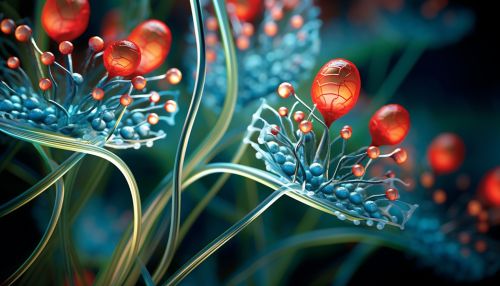The Biological Mechanisms of Plant Response to Wind Stress
Introduction
Plants, as sessile organisms, are constantly exposed to various environmental factors, including wind stress. The biological mechanisms of plant response to wind stress are complex and multifaceted, involving changes at the molecular, cellular, and whole-plant levels. These responses enable plants to withstand and adapt to wind stress, thereby ensuring their survival, growth, and reproduction.


Morphological Responses
One of the most visible responses of plants to wind stress is the alteration in their morphology. This includes changes in plant height, leaf size, stem thickness, and root system architecture. For instance, plants exposed to wind stress often exhibit a reduced height, a phenomenon known as "wind dwarfism". This is a result of decreased cell elongation and increased cell division in the stem, which leads to a shorter, sturdier plant that is less likely to be damaged by wind.


Physiological Responses
Plants also exhibit physiological responses to wind stress, which are primarily aimed at maintaining water balance and photosynthetic efficiency. Wind stress can lead to increased transpiration rates due to the increased movement of air over the leaf surface, potentially leading to water deficit in the plant. To counteract this, plants may close their stomata to reduce water loss. Additionally, wind stress can cause mechanical damage to the photosynthetic apparatus, leading to reduced photosynthetic efficiency. Plants can mitigate this by increasing the repair and turnover of damaged photosynthetic proteins.


Biochemical Responses
At the biochemical level, plants respond to wind stress by altering their metabolism. This includes the production of reactive oxygen species (ROS), which can cause oxidative damage to cells. To protect against this, plants upregulate the production of antioxidants, which can neutralize ROS. Additionally, plants may increase the synthesis of abscisic acid (ABA), a plant hormone that plays a key role in stress responses, including stomatal closure and the induction of stress-responsive genes.


Molecular Responses
The molecular responses of plants to wind stress involve changes in gene expression. These changes are mediated by various signaling pathways, including those involving plant hormones such as ABA and ethylene. These hormones can activate transcription factors, which in turn regulate the expression of stress-responsive genes. These genes encode proteins involved in various stress responses, including antioxidant production, cell wall modification, and damage repair.


Ecological Implications
The responses of plants to wind stress have important implications for plant ecology. For instance, wind dwarfism can influence plant competition and community structure, as shorter plants may be less competitive for light. Additionally, changes in leaf size and shape can affect plant-pollinator interactions, as wind stress can make it more difficult for pollinators to land on and navigate the plant. Finally, the changes in root system architecture can influence soil erosion and nutrient cycling, as deeper and more extensive root systems can help to stabilize the soil and enhance nutrient uptake.


